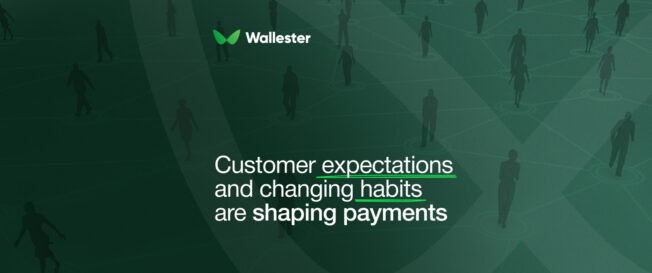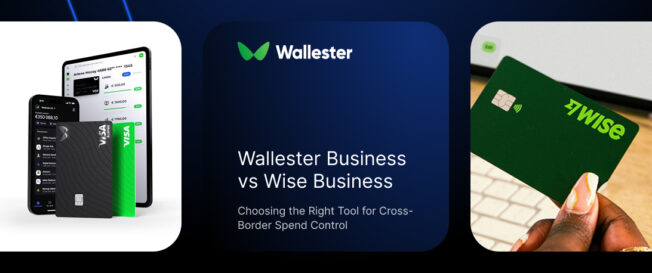Banking works for the biggest clients. But for the rest, well, good luck.
If you’re running a business, there’s a good chance you’ve heard some version of that before. It’s a frustration many small and mid-sized companies share. And now it’s backed by data, too. According to Capgemini’s World Payments Report 2026, around 40% of merchants plan to switch from banks to fintechs within the next 12 months.
The reason? Fintechs are faster, clearer, and simply more in tune with how things should work in contemporary business.
Over the past decade, customer expectations and habits have changed considerably. Business owners and finance teams are getting used to digital tools that work instantly – transferring money, issuing cards, tracking expenses, or opening a new account. Also, they are expecting transparency, personalisation, and a service experience that doesn’t involve waiting for a callback or signing yet another PDF.
Banking may still dominate legacy payments. But when it comes to customer satisfaction, the gap is widening in fintechs’ favor.
The Expectation Gap
So, here are the numbers.
Only 15% of small merchants say they’re satisfied with their current bank. For mid-sized ones, it’s 22%. Large merchants? They’re doing relatively better as satisfaction hovers around 36%.
Banks have long focused more resources on their biggest customers. Unsurprisingly, that has shaped what services they build, where they innovate, and how much attention they pay to smaller players. Essentially, SMEs are left with generic products, slow support, and minimal personalisation.
Meanwhile, fintechs and non-bank acquirers are seizing the opportunity. The same Capgemini report shows:
- Only 32% of banks offer industry-specific value-added services (VAS) for sectors like retail, hospitality, or travel.
- Even fewer, just 23%, use merchant data to segment, benchmark, or offer performance insights.
- In contrast, 45% of fintechs deliver industry-specific VAS, and 64% personalise merchant experiences using data.
- When it comes to revenue, banks make 70% of their merchant income from core payments, with just 14% from VAS. Fintechs lean heavier into VAS — 73% from core payments and 19% from VAS.
What Are VAS – In Human Terms
Let’s pause for a second. Value-Added Services (VAS) might sound like fintech marketing jargon – and that’s precisely what it is. But the term simply means extra features that help business owners and finance teams keep things running smoothly.
Think of your card acceptance or payment gateway as the base. VAS are the side tools: real-time analytics dashboards, spending caps and fraud alerts tailored to your industry, transaction whitelisting, instant transfers, batch payments, card issuance, and so on.
If a bank offers VAS, it’s usually the same across every industry. But an industry-specific VAS means it’s configured – or, more often, that you can easily configure it within the platform yourself – to your world: hotels, restaurants, delivery, retail. That’s how you end up with tools and insights that actually match how you operate.
Why SMEs Are Moving On
SMEs don’t expect perfection, but they do expect some sort of progress.
Their main pain points are well known. First of all, they want onboarding that is quick and simple, ideally completed within hours, not weeks. Then there is the question of cost: SMEs want transparent pricing, not footnotes. Finally, they want support that feels human and not ticket-based.
The trend is clear. Because switching is now easier than ever, when they don’t get what they want, they move on.
Ultimately, the trend is a response to changing habits and expectations. In short, people expect business tools to be as fast and intuitive as the other personal apps they already use.
Where Wallester Business Fits In
Seen in this context, Wallester Business makes perfect sense. It’s an expense management and card issuance platform designed for businesses that want control, speed, and clarity – without the old banking friction.
With Wallester Business, you get:
- Fast onboarding – verification within hours, not weeks.
- Transparent pricing – no FX markups or hidden fees.
- 300 free virtual Visa cards – ready to issue instantly for teams, projects, or campaigns.
- Unified dashboard – one view of every transaction across every team.
- Custom limits and automation – tools built around how your business actually runs.
- Industry-aware features – analytics, spending rules, and early steps toward true value-added services.
SMEs’ expectations have changed, and rightly so. Wallester Business meets them where they are: ready to move fast, stay organised, and focus on growth instead of bureaucracy.




